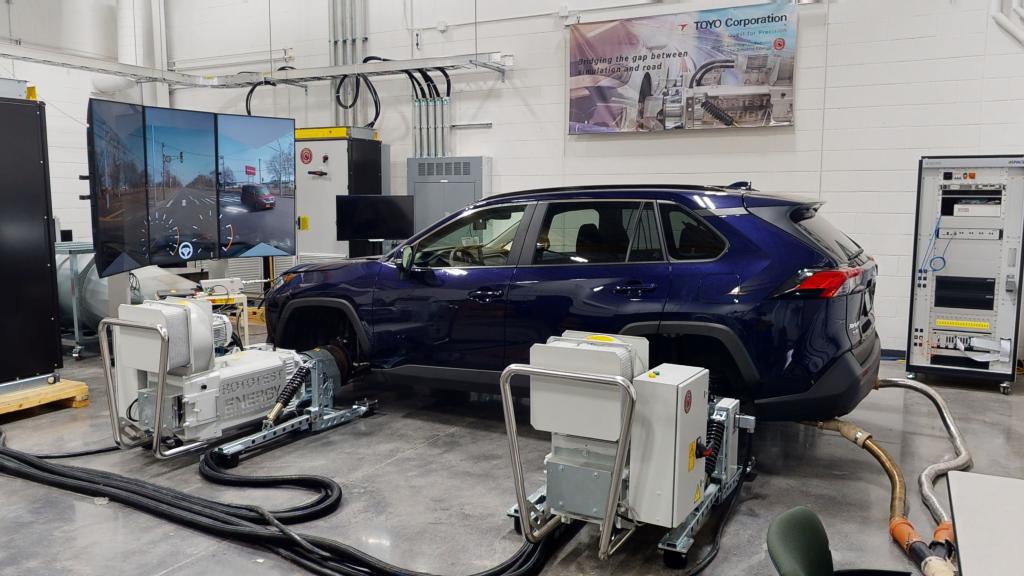The Connected and Automated Vehicle Environment (CAVE) Laboratory at Oak Ridge National Laboratory offers a unique proving ground to evaluate intelligent mobility solutions using real-world hardware and data in virtual traffic conditions. This integrated virtual and physical environment enhances scientists’ ability to accurately verify the large-scale energy benefits and emissions impacts of connected and automated vehicles and other advanced transportation technologies.
CAVE uses an advanced steerable chassis dynamometer to immerse full-sized autonomous and connected vehicles into a virtual replica of on-road scenarios, offering safe and repeatable technology evaluation. The platform subjects vehicles to emulated sensor streams and control strategies for lidar, radar, camera systems, and various forms of vehicle connectivity.

CAVE’s test bed creates a virtual approximation of physical assets fed by real-world hardware and data, also known as a digital twin. This digital twin, populated either automatically using artificially intelligence, or manually, allows scientists to study and model physical systems, and how they will respond when changes occur. The system supports the development of hardware, control strategies and algorithms for intelligent vehicle technologies, central traffic controllers, as well as infrastructure controls.
CAVE incorporates:
- Dyno Systems: Steerable Hub Dynamometers, Frontal Display
- ORNL Systems: dSPACE Sensor Emulation Hardware-in-the-Loop (HIL) Rack, ORNL Real-Sim Connected Laboratories and Virtual Environments, Vehicle Dynamics
The integration of micro- and mesoscopic-level vehicle/traffic simulation tools with advanced HIL-enabled laboratories allows researchers to investigate the impact on energy efficiency of CAVs and other advanced transportation technologies based upon realistic scenarios and interactions with their surroundings where behaviors may not currently be well understood.
The platform can link laboratories across the country to CAVE’s high-fidelity traffic simulations while subjecting actual powertrains to emulated real-world traffic conditions utilizing Vehicle-to-Vehicle (V2V) and Vehicle-to-Infrastructure (V2I) communication provided by real hardware.
The CAVE Laboratory is part of the National Transportation Research Center (NTRC) at ORNL, DOE’s only designated user facility focused on performing early-stage research and development in transportation technologies.

